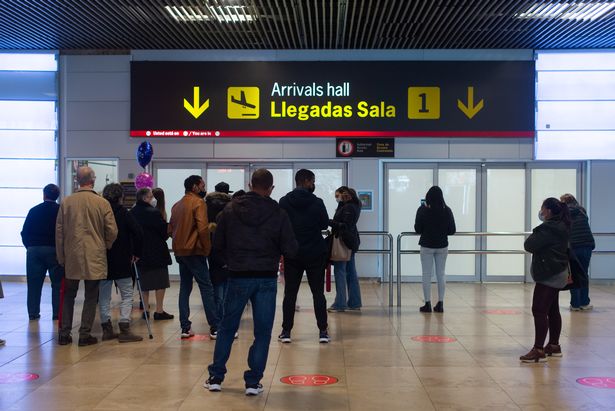Spain is the most popular tourist destination with UK tourists. The country boasts a Mediterranean climate with plenty of sunshine, as well as delicious cuisine and historical sites. Spain is a favourite to UK holidaymakers(Image: Holger Leue/Getty Images)
Spain is a favourite to UK holidaymakers(Image: Holger Leue/Getty Images)
While the summer holidays may have wrapped up here in the UK, it doesn’t mean families aren’t squeezing in a few more trips to round off the season.
Once the kids are back in school, holiday prices take a dip and many Brits seize the opportunity to snag a bargain. Spain remains a firm favourite with UK holidaymakers.
The country offers a Mediterranean climate with ample sunshine, mouth-watering cuisine and historical sites aplenty. Compared to other tourist hotspots, Spain is generally seen as a pocket-friendly destination.
READ MORE: Where is hot in October? Best European destinations for autumn breaks with £13 flightsREAD MORE: Europe’s ‘cheapest city for beer’ where a drink costs as little as 65p New rules will apply starting October 12 for those wishing to visit Spain(Image: Europa Press via Getty Images)
New rules will apply starting October 12 for those wishing to visit Spain(Image: Europa Press via Getty Images)
We all want our holidays to go off without a hitch, from the moment we set off for the airport to the moment we touch down back on British soil. However, there are times when a dream holiday can quickly turn sour.
Spain adheres to Schengen area regulations, which means your passport must have a ‘date of issue’ less than ten years before the date you arrive. If you renewed your passport prior to October 1, 2018, it might have a date of issue that exceeds ten years, reports the Liverpool Echo.
Your passport also needs to have an ‘expiry date’ at least three months after the day you plan to depart the Schengen area (the expiry date does not need to be within 10 years of the date of issue).
Today, the Schengen area spans over 4 million square kilometres and is home to over 450 million people, encompassing 29 countries. The Schengen area allows millions of individuals to travel freely between member nations without undergoing border checks.
The Foreign Office has advised that before jetting off, you should ensure your passport and other travel documents are in order with your travel provider. If you attempt to enter with an invalid document or a passport reported as lost or stolen, you’ll be turned away at the border.
READ MORE: Brits warned of little-known post-Brexit rule to visit EU starting in two weeks
Visa-free travel to the Schengen area, which includes Spain, is permitted for up to 90 days within any 180-day period. This applies under certain conditions:
- as a tourist
- to visit family or friends
- to attend business meetings, cultural or sports events
- for short-term studies or training
However, if you’re planning to work in Spain, the rules change. Border officials will scrutinise your entry and exit stamps to ensure you haven’t overstayed the 90-day visa-free limit for the Schengen area.
Upon arrival at Spanish border control, you may be required to present:
- a receipt of your return or onward ticket
- proof of travel insurance
- you have enough funds to support your stay, with the amount varying depending on your accommodation
- a hotel booking confirmation or proof of address (if you’re staying at your own property)
- an invitation or proof of address from a third party, friends, or family (including a ‘carta de invitación completed by your hosts)
From October 12, travellers heading to parts of Europe, including Spain, will encounter significant changes at the airport due to the European Union’s (EU) new Entry/Exit System (EES). When entering and leaving the Schengen area for short stays, you may need to provide fingerprints and a photo, and answer the Schengen Border Code questions.
The EES might add a few extra minutes to each passenger’s journey, so be prepared for potentially longer waits at the border once the system is operational.
There’s no need to take any action prior to arriving at the border, and there’s no charge for EES registration. According to Gov.uk: “After it is fully implemented, EES registration will replace the current system of manually stamping passports when visitors arrive in the EU.”.
